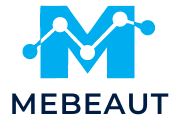Social media platforms, with their growing prominence, have become an integral part of marketing strategies for businesses worldwide. The facility to reach out to a global audience in real-time has redefined the dynamics of marketing. However, for small businesses in the UK, the challenge lies not just in creating social media content but also in aptly customizing it for different platforms. Your unique brand story should resonate with your audience. It is not just about the content. It’s about the timing, the platform, the audience, and the strategy.
Understanding the Different Social Media Platforms
Before you embark on your social media journey, understanding the nature of different platforms will help enhance your business’s reach. Each social media platform is designed with a specific audience in mind. Hence, the same marketing strategy may not work across all platforms.
This might interest you : What Are the Steps to Creating a Successful Home-Based Baking Business in the UK?
Facebook remains the most popular platform with a diverse user base. It is a versatile platform that allows for a variety of content types – from text and image posts to videos and live broadcasts.
Instagram, on the other hand, is heavily focused on visuals. It is predominantly used by a younger demographic, and its features like Instagram Stories and IGTV provide businesses additional avenues to engage with the audience.
Also to see : What Are the Essential Tools and Technologies for a UK Startup to Enhance Team Collaboration Remotely?
LinkedIn caters to a more professional audience. It is an excellent platform for B2B marketing, recruitment, and sharing industry-related content.
Twitter is all about real-time updates. The platform is ideal for quick, timely posts and is a powerful tool for customer service and real-time marketing.
Creating and Adapting Content for Each Platform
Creating engaging content is at the core of social media marketing. But what works for one platform may not yield results for another. To maximize your reach, it is critical to adapt your content according to the platform.
For Facebook, the focus should be on creating community-oriented content that encourages interaction. This can include live videos, contests, and user-generated content.
On Instagram, high-quality visuals should be your primary focus. Instagram Stories provide an excellent opportunity for behind-the-scenes content, tutorials, or limited-time offers.
LinkedIn requires a more formal approach. Sharing industry insights, company news, and thought leadership content is beneficial here.
Twitter, given its real-time nature, is perfect for updates, news, and customer response.
Identifying and Engaging with Your Target Audience
Your audience plays a key role in your social media strategy. It is crucial to identify and understand your target audience to create content that resonates with them and encourages engagement.
Facebook’s broad demographic allows you to target a wider audience. It provides features like Facebook Insights and Audience Insights for a deeper understanding of your audience.
Instagram and Twitter offer analytics to gain insights about followers and their preferences. LinkedIn, with its professional user base, is ideal for targeting industry professionals and businesses.
Leveraging Social Media Ads
Social media ads are a powerful tool for businesses to reach out to a larger audience beyond their followers. Facebook Ads Manager, Instagram’s promotion feature, LinkedIn’s sponsored content, and Twitter’s promoted tweets are all designed to help businesses increase their visibility.
Each platform offers different ad formats and targeting options. Facebook provides the most comprehensive options, allowing you to target users based on demographics, interests, behaviors, and more. Instagram ads are integrated with Facebook’s ad platform, providing similar targeting options. LinkedIn and Twitter also offer targeted advertising options but are more focused on professional interests and timely events.
Timing Your Social Media Posts for Maximum Engagement
The time you post on social media can significantly impact your engagement rate. It’s not enough to create great content; you need to ensure that it reaches your audience when they are most active on the platform.
Facebook and Instagram offer insights about when your audience is most active. Usually, posting during weekdays, specifically in the afternoon, yields better results. On Twitter, due to its real-time nature, tweeting during peak hours and live events increases visibility. LinkedIn is more active during business hours, making it ideal for posting professional content during the workweek.
By crafting your social media strategy keeping these points in mind, you can effectively tailor your content for different platforms and maximize your reach.
Using Analytics to Improve Your Social Media Strategy
Analyzing your social media performance is an essential step in creating an effective content strategy. This will help you identify what works for your audience and what doesn’t, thereby enabling you to tailor your future content accordingly.
Every social media platform provides some form of analytics that can help businesses measure engagement and reach. Facebook Insights allows you to track user interaction on your page and posts, providing valuable information about when your audience is most active and what kind of content they resonate with. Instagram offers similar analytics, focusing on follower demographics and post-performance data.
Twitter Analytics gives insights into tweet impressions, engagement rates, and audience interests. LinkedIn’s Analytics includes metrics on post impressions, engagement, and follower demographics. Using these tools allows you to understand your audience better and develop a more effective content calendar.
While these native tools are beneficial, third-party tools like Sprout Social or Social Champ can provide deeper insights and comparative analysis across different platforms. They also offer features such as scheduling, cross-posting, and content management, which can streamline your social media marketing efforts.
Remember, the goal is not just to amass a large following but to build an engaged community that interacts with your content and supports your small business. Therefore, regularly evaluating and tweaking your social media strategy based on the data is crucial for your brand’s success.
Boosting Brand Awareness and Engagement through Social Media
Social media platforms offer small businesses an unparalleled opportunity to increase brand awareness and engage with their target audience. By tailoring your content to each platform and its audience, you can effectively boost engagement and build a strong online presence for your brand.
Creating a consistent brand voice across all platforms is vital. This doesn’t mean cross-posting the same content on all platforms, but rather ensuring that your brand’s personality and message remain consistent. While the medium of delivery might change – a blog post on LinkedIn, a photo on Instagram, or a tweet on Twitter – the essence of your brand story should remain the same.
User-generated content is an effective way to boost engagement and foster a sense of community. Encourage your audience to share their experiences with your product or service using a specific hashtag. This not only provides you with free content but also builds trust among prospective customers.
Collaborating with influencers can also help increase brand awareness, especially on platforms like Instagram. Choose influencers whose values align with your brand and who have a loyal following in your target demographic.
Remember, social media marketing is a marathon, not a sprint. Consistency, patience, and adaptability are key. Keep experimenting with different content types, posting times, and engagement strategies to find what works best for your small business.
Conclusion
In conclusion, tailoring your social media content for different platforms can significantly enhance your small business’s reach in the UK. Understanding each platform’s unique characteristics and audience is the first step. From there, adapt your content strategy, use analytics to gauge performance and tweak your approach as needed.
Engage with your target audience by providing valuable content, responding to comments, and fostering a sense of community. Leverage the power of social media ads and collaborations to boost your visibility. And finally, never lose sight of your brand story across all platforms.
With a well-planned and executed social media strategy, small businesses can effectively compete with bigger brands, reach a wider audience, and achieve their marketing goals. So, start crafting your unique social media content strategy today!








